Henrik Ebel
Reducing the Communication of Distributed Model Predictive Control: Autoencoders and Formation Control
Apr 07, 2025Abstract:Communication remains a key factor limiting the applicability of distributed model predictive control (DMPC) in realistic settings, despite advances in wireless communication. DMPC schemes can require an overwhelming amount of information exchange between agents as the amount of data depends on the length of the predication horizon, for which some applications require a significant length to formally guarantee nominal asymptotic stability. This work aims to provide an approach to reduce the communication effort of DMPC by reducing the size of the communicated data between agents. Using an autoencoder, the communicated data is reduced by the encoder part of the autoencoder prior to communication and reconstructed by the decoder part upon reception within the distributed optimization algorithm that constitutes the DMPC scheme. The choice of a learning-based reduction method is motivated by structure inherent to the data, which results from the data's connection to solutions of optimal control problems. The approach is implemented and tested at the example of formation control of differential-drive robots, which is challenging for optimization-based control due to the robots' nonholonomic constraints, and which is interesting due to the practical importance of mobile robotics. The applicability of the proposed approach is presented first in form of a simulative analysis showing that the resulting control performance yields a satisfactory accuracy. In particular, the proposed approach outperforms the canonical naive way to reduce communication by reducing the length of the prediction horizon. Moreover, it is shown that numerical experiments conducted on embedded computation hardware, with real distributed computation and wireless communication, work well with the proposed way of reducing communication even in practical scenarios in which full communication fails.
Discovering Antagonists in Networks of Systems: Robot Deployment
Feb 27, 2025
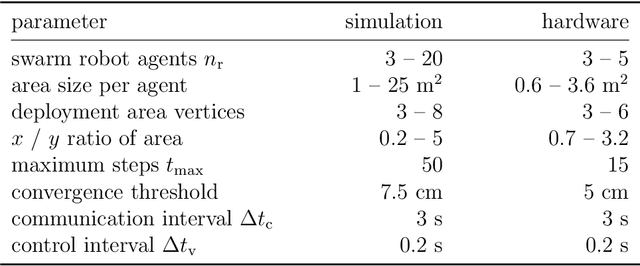
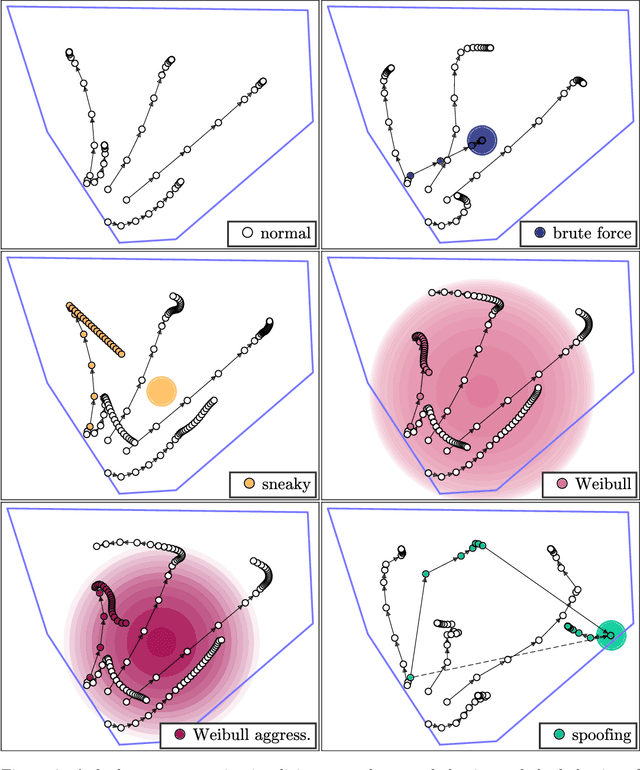
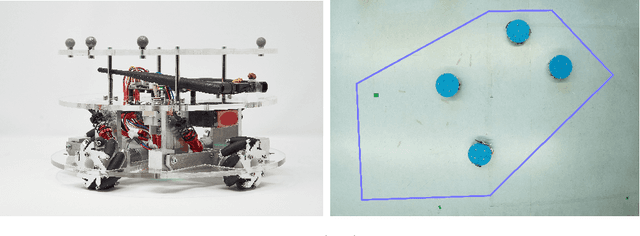
Abstract:A contextual anomaly detection method is proposed and applied to the physical motions of a robot swarm executing a coverage task. Using simulations of a swarm's normal behavior, a normalizing flow is trained to predict the likelihood of a robot motion within the current context of its environment. During application, the predicted likelihood of the observed motions is used by a detection criterion that categorizes a robot agent as normal or antagonistic. The proposed method is evaluated on five different strategies of antagonistic behavior. Importantly, only readily available simulated data of normal robot behavior is used for training such that the nature of the anomalies need not be known beforehand. The best detection criterion correctly categorizes at least 80% of each antagonistic type while maintaining a false positive rate of less than 5% for normal robot agents. Additionally, the method is validated in hardware experiments, yielding results similar to the simulated scenarios. Compared to the state-of-the-art approach, both the predictive performance of the normalizing flow and the robustness of the detection criterion are increased.
An Online Optimization-Based Trajectory Planning Approach for Cooperative Landing Tasks
Feb 19, 2025Abstract:This paper presents a real-time trajectory planning scheme for a heterogeneous multi-robot system (consisting of a quadrotor and a ground mobile robot) for a cooperative landing task, where the landing position, landing time, and coordination between the robots are determined autonomously under the consideration of feasibility and user specifications. The proposed framework leverages the potential of the complementarity constraint as a decision-maker and an indicator for diverse cooperative tasks and extends it to the collaborative landing scenario. In a potential application of the proposed methodology, a ground mobile robot may serve as a mobile charging station and coordinates in real-time with a quadrotor to be charged, facilitating a safe and efficient rendezvous and landing. We verified the generated trajectories in simulation and real-world applications, demonstrating the real-time capabilities of the proposed landing planning framework.
Efficient Avoidance of Ellipsoidal Obstacles with Model Predictive Control for Mobile Robots and Vehicles
Dec 16, 2024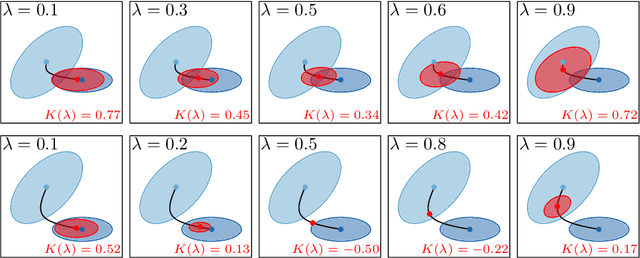

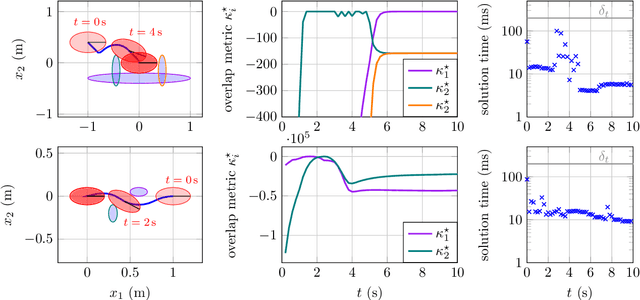

Abstract:In real-world applications of mobile robots, collision avoidance is of critical importance. Typically, global motion planning in constrained environments is addressed through high-level control schemes. However, additionally integrating local collision avoidance into robot motion control offers significant advantages. For instance, it reduces the reliance on heuristics and conservatism that can arise from a two-stage approach separating local collision avoidance and control. Moreover, using model predictive control (MPC), a robot's full potential can be harnessed by considering jointly local collision avoidance, the robot's dynamics, and actuation constraints. In this context, the present paper focuses on obstacle avoidance for wheeled mobile robots, where both the robot's and obstacles' occupied volumes are modeled as ellipsoids. To this end, a computationally efficient overlap test, that works for arbitrary ellipsoids, is conducted and novelly integrated into the MPC framework. We propose a particularly efficient implementation tailored to robots moving in the plane. The functionality of the proposed obstacle-avoiding MPC is demonstrated for two exemplary types of kinematics by means of simulations. A hardware experiment using a real-world wheeled mobile robot shows transferability to reality and real-time applicability. The general computational approach to ellipsoidal obstacle avoidance can also be applied to other robotic systems and vehicles as well as three-dimensional scenarios.
Data-Driven Predictive Control of Nonholonomic Robots Based on a Bilinear Koopman Realization: Data Does Not Replace Geometry
Nov 11, 2024



Abstract:Advances in machine learning and the growing trend towards effortless data generation in real-world systems has led to an increasing interest for data-inferred models and data-based control in robotics. It seems appealing to govern robots solely based on data, bypassing the traditional, more elaborate pipeline of system modeling through first-principles and subsequent controller design. One promising data-driven approach is the Extended Dynamic Mode Decomposition (EDMD) for control-affine systems, a system class which contains many vehicles and machines of immense practical importance including, e.g., typical wheeled mobile robots. EDMD can be highly data-efficient, computationally inexpensive, can deal with nonlinear dynamics as prevalent in robotics and mechanics, and has a sound theoretical foundation rooted in Koopman theory. On this background, this present paper examines how EDMD models can be integrated into predictive controllers for nonholonomic mobile robots. In addition to the conventional kinematic mobile robot, we also cover the complete data-driven control pipeline - from data acquisition to control design - when the robot is not treated in terms of first-order kinematics but in a second-order manner, allowing to account for actuator dynamics. Using only real-world measurement data, it is shown in both simulations and hardware experiments that the surrogate models enable high-precision predictive controllers in the studied cases. However, the findings raise significant concerns about purely data-centric approaches that overlook the underlying geometry of nonholonomic systems, showing that, for nonholonomic systems, some geometric insight seems necessary and cannot be easily compensated for with large amounts of data.
On Koopman-based surrogate models for non-holonomic robots
Mar 16, 2023Abstract:Data-driven surrogate models of dynamical systems based on the extended dynamic mode decomposition are nowadays well-established and widespread in applications. Further, for non-holonomic systems exhibiting a multiplicative coupling between states and controls, the usage of bi-linear surrogate models has proven beneficial. However, an in-depth analysis of the approximation quality and its dependence on different hyperparameters based on both simulation and experimental data is still missing. We investigate a differential-drive mobile robot to close this gap and provide first guidelines on the systematic design of data-efficient surrogate models.
Cooperative Distributed MPC via Decentralized Real-Time Optimization: Implementation Results for Robot Formations
Jan 19, 2023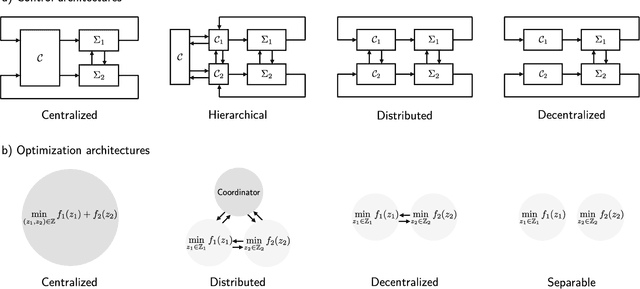
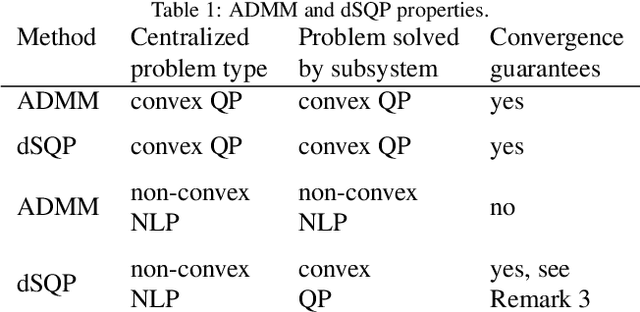
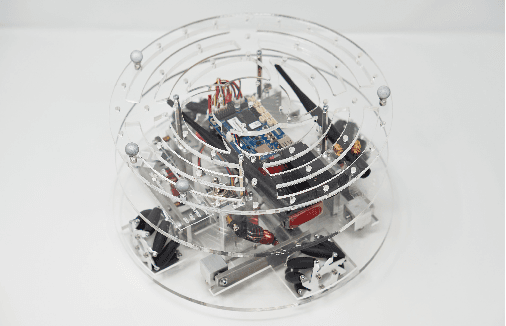

Abstract:Distributed model predictive control (DMPC) is a flexible and scalable feedback control method applicable to a wide range of systems. While stability analysis of DMPC is quite well understood, there exist only limited implementation results for realistic applications involving distributed computation and networked communication. This article approaches formation control of mobile robots via a cooperative DMPC scheme. We discuss the implementation via decentralized optimization algorithms. To this end, we combine the alternating direction method of multipliers with decentralized sequential quadratic programming to solve the underlying optimal control problem in a decentralized fashion. Our approach only requires coupled subsystems to communicate and does not rely on a central coordinator. Our experimental results showcase the efficacy of DMPC for formation control and they demonstrate the real-time feasibility of the considered algorithms.
Time-Optimal Handover Trajectory Planning for Aerial Manipulators based on Discrete Mechanics and Complementarity Constraints
Sep 01, 2022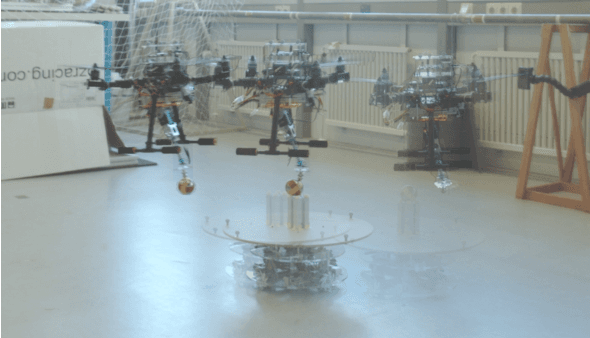
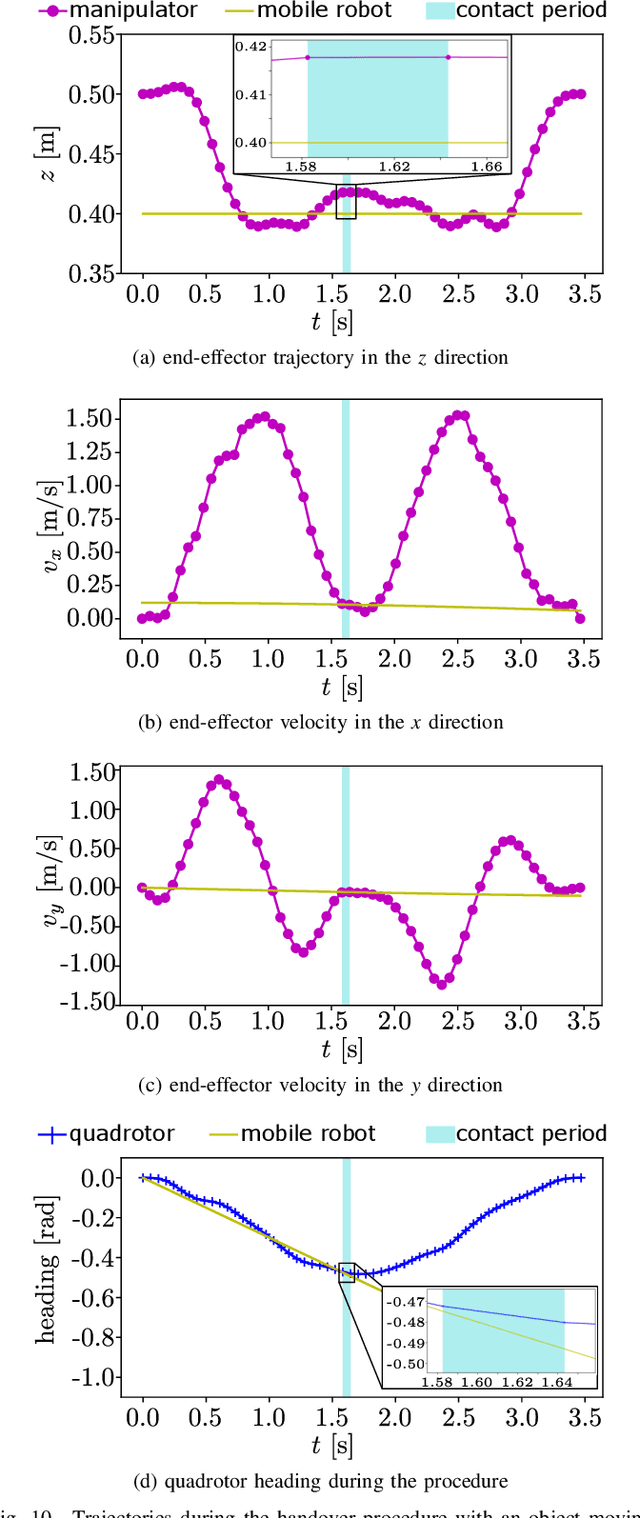
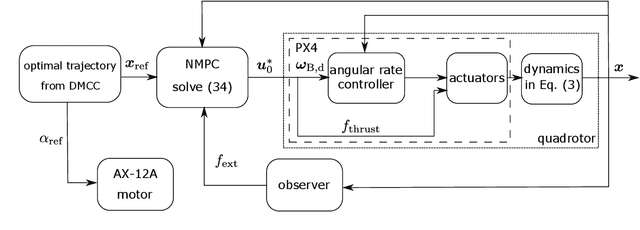
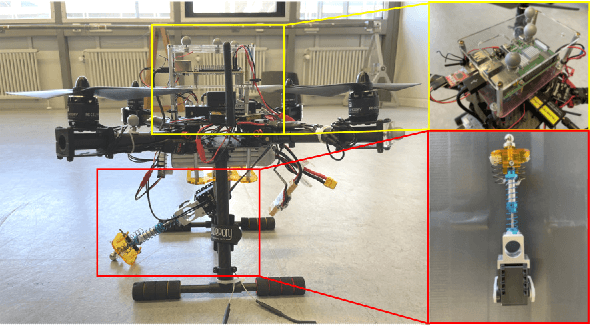
Abstract:Planning a time-optimal trajectory for aerial robots is critical in many drone applications, such as rescue missions and package delivery, which have been widely researched in recent years. However, it still involves several challenges, particularly when it comes to incorporating special task requirements into the planning as well as the aerial robot's dynamics. In this work, we study a case where an aerial manipulator shall hand over a parcel from a moving mobile robot in a time-optimal manner. Rather than setting up the approach trajectory manually, which makes it difficult to determine the optimal total travel time to accomplish the desired task within dynamic limits, we propose an optimization framework, which combines discrete mechanics and complementarity constraints (DMCC) together. In the proposed framework, the system dynamics is constrained with the discrete variational Lagrangian mechanics that provides reliable estimation results also according to our experiments. The handover opportunities are automatically determined and arranged based on the desired complementarity constraints. Finally, the performance of the proposed framework is verified with numerical simulations and hardware experiments with our self-designed aerial manipulators.
Model Predictive Control of Non-Holonomic Vehicles: Beyond Differential-Drive
May 23, 2022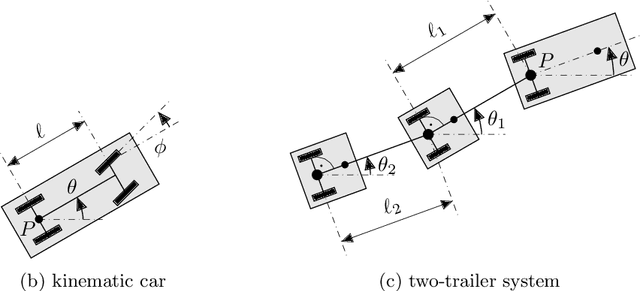
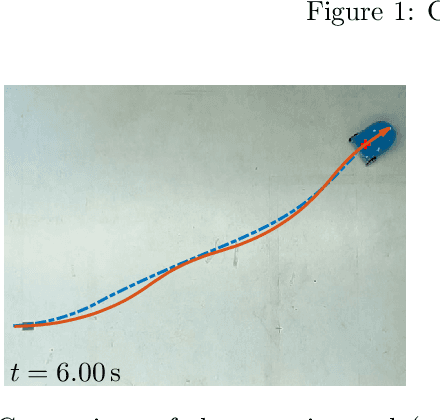
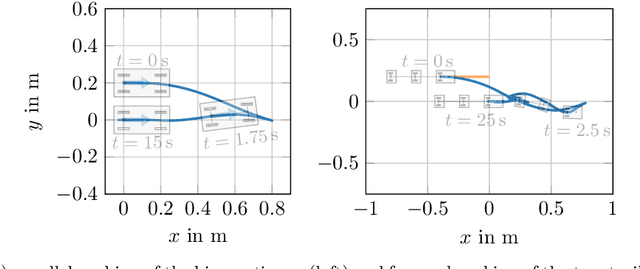
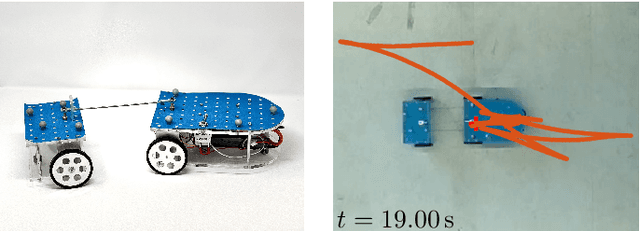
Abstract:Non-holonomic vehicles are of immense practical value and increasingly subject to automation. However, controlling them accurately, e.g., when parking, is known to be challenging for automatic control methods, including model predictive control (MPC). Combining results from MPC theory and sub-Riemannian geometry in the form of homogeneous nilpotent system approximations, this paper proposes a comprehensive, ready-to-apply design procedure for MPC controllers to steer controllable, driftless non-holonomic vehicles into given setpoints. It can be ascertained that the resulting controllers nominally asymptotically stabilize the setpoint for a large-enough prediction horizon. The design procedure is exemplarily applied to four vehicles, including the kinematic car and a differentially driven mobile robot with up to two trailers. The controllers use a non-quadratic cost function tailored to the non-holonomic kinematics. Novelly, for the considered example vehicles, it is proven that a quadratic cost employed in an otherwise similar controller is insufficient to reliably asymptotically stabilize the closed loop. Since quadratic costs are the conventional choice in control, this highlights the relevance of the findings. To the knowledge of the authors, it is the first time that MPC controllers of the proposed structure are applied to non-holonomic vehicles beyond very simple ones, in particular (partly) on hardware.
 Add to Chrome
Add to Chrome Add to Firefox
Add to Firefox Add to Edge
Add to Edge